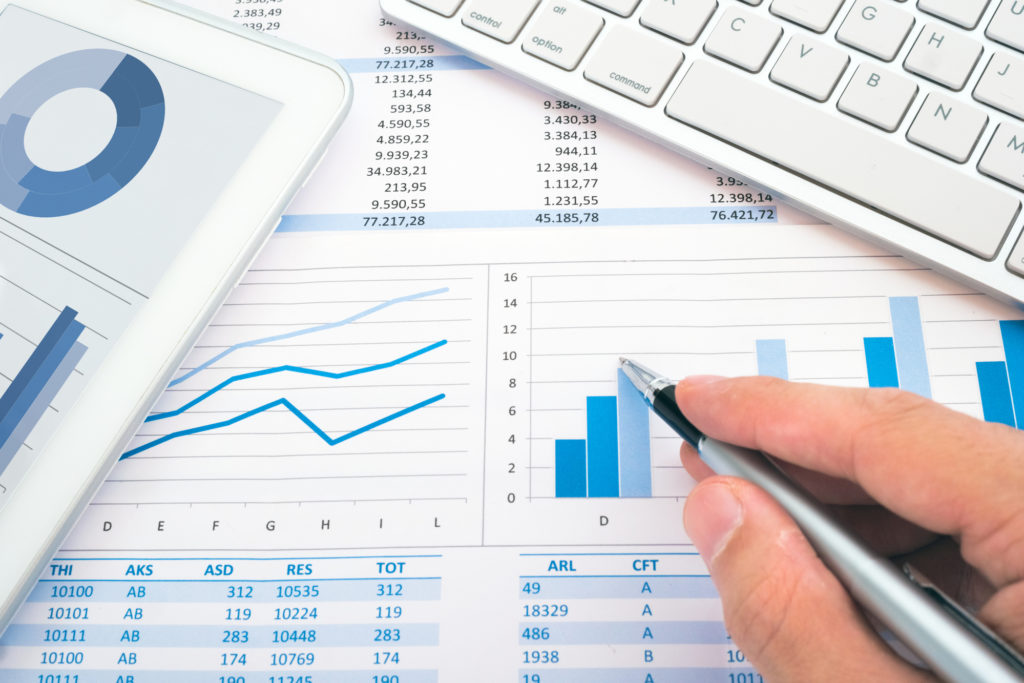How to Create an Expense Report
Businesses of all scopes and scales incur expenses at one point or another. Some may have as many as 100 different purchases in a month. Your expenses may occur more frequently or less frequently, but regardless, you need to keep track of them. In this article, you will learn how to create an expense report for your business.

You need to turn your expenses into valuable data by creating expense reports. The process sounds daunting, but every business—big or small—should know how to make and use them.
Whether you have an accounting team or do everything on your own, it never hurts to learn more about expense management. In this particular article, you can expect to learn more about creating expense reports. Specifically, we provide more information on:
- Why You Need Expense Reports
- The Role They Play in Tax Returns
- How to Create Them with Excel and Other Tools
- Expense Report Templates
- And More!
Why Do You Need an Expense Report?
There are a lot of things that your small business can live without, but expense reporting isn’t one of them. You need to track your expenses on a monthly, if not daily, basis.
Why?
Though you should know much money you spend and make for cash flow purposes. That’s not the only reason that you should be reporting all of your business costs. We can give you a few more reasons for reporting all of your business expenses.
Employee Reimbursement
Small business owners often ask employees to run errands and purchase things on their own credit card or cash. When they do, they must reimburse their employees for the money they spent. The only way to make sure that an employee gets their reimbursement is by creating an expense report. Expense reporting allows you to make faster approval decisions and pay your employees back as soon as possible. Expense reports are also helpful if you need to issue reimbursement for a business trip.
Budget Tracking and Project Management
Aside from tracking employee travel costs, your company also needs to make expense reports for budgeting and forecasting. If you work on multiple projects at once, an expense report allows you to breakdown the spending by each project. You can then use the information to make decisions about future expenditures. For example, you may see an area that could benefit from more spending. On the other hand, you could spot the areas where you need to cut back.
Expense Report for Tax Return
If those two reasons weren’t enough to convince you, then we have one more significant reason for you. You can write off most of your business expenses from your company tax.
What does that mean?
Tax-deductible expenses reduce the amount of your overall taxable income. If you are on the lower end of a tax bracket, write-offs can make a huge impact. All of your expenses could total enough to put you in the lower bracket. As a result, you could save hundreds or thousands of dollars.
For that reason, you will be glad that you took the time to track all of your expenses and save your receipts. All of this information makes it easier to file your taxes. If you plan to file your tax return on your own, it will save you time and money!
Your accountant will also appreciate your efforts. If they have access to an accurate business expense report, they can get the most out of your tax deductions. Without the information, they may have to track down all of your expenses, or you could miss the deductions entirely!
How to Create an Expense Report
With a better understanding of the role expense reports plays, you can learn how to create one. We know that it sounds like a fancy accounting term, but it’s quite simple when you break it down. In fact, you only need to follow four simple steps to create an expense report for your small business.
Select Your Software or Template
The easiest way to report expenses is to send all of your receipts and expenses to an accountant or bookkeeper. For some small businesses with limited budgets, this isn’t an option.
Fortunately, you don’t have to do it all alone. There are plenty of helpful accounting and expense management software options available. If you can’t afford those options either, you can always opt for a template or excel sheet. There’s no right or wrong choice as long as it gets the job done.
Customize Columns to Fit Your Needs
Once you have your software or template, you need to customize it for your business needs. If you are a freelance graphic designer, your expenses look a lot different than a bakery’s. Your expense report should reflect that. While the basic columns for the date, vendor name, and amount stay the same, you might have different expense categories. The following are just a few examples of custom columns you may need to include:
- Travel and Meals
- Automotive Expenses
- Rent
- Utilities
- Office Supplies
- Advertising
- Mortgage
- Insurance
- Wages
- Employee Benefit Programs
Input Your Itemized Expenses
After you finish customizing your expense report columns, it’s time to actually report the transactions. The expenses should be listed in chronological. To do so, start your list with the oldest transaction and end with the most recent purchase.
Every purchase should have one line. Each line needs to be filled out as much as possible. The more detail you provide now, the better business decisions you can make in the future. You must include which client and project the expense belongs to. When you do this, you can accurately monitor your budget and spending. We recommend that you also keep any receipts that correspond to the report. It will make your life easier at tax time!
Calculate the Total Amount
With all of your expenses reported, you can finally add up the grand total. However, that’s not all you need to calculate. Many expense reports have subtotals based on the different subcategories. You should add up these totals as well so that you can record spending in each category. From there, you should double-check everything to ensure its accuracy. When you’re happy with everything, you can share the report with anyone who needs to see it.
Expense Report Templates
If your business isn’t at the point of needing full-service accounting software, an expense report template will do. They are a quick, simple, and free alternative to many of the more expensive options on the market. If you have access to Microsoft Office, you can simply use Excel to create your own template. Excel also has many pre-made Excel expense report templates from which you can choose.
Those aren’t your only options, however.
A quick google search can provide you with hundreds of expense report template options. You can find one geared toward travel and meal expenses, or you can choose one that helps you manage your different projects.
Even if you don’t have access to Excel, you can still create a free expense report with Google Sheets. As long as you have access to a google account, you can make, edit, and share an expense report template.
Here are some expense report templates you can use.
WellyBox Can Help You Make an Expense Report
If you’re still feeling overwhelmed by the idea of reporting your own business expenses, WellyBox can help. With our app, your employees can scan receipts while they travel. You can also use our software to scan business emails. This receipt tracking feature allows you to uncover every receipt or invoice in your inbox.
From there, we extract all of the important information from the receipts. We can then input the data directly into an expense report. WellyBox even has advanced integrations with accounting software, so you can send your data directly to your QuickBooks account. Once you share the data, you can use your preferred software to create a customized expense report. Our software also makes it easy to share directly with your accountant or bookkeeper.
Free Business Expense Tracking
If you are a small business owner, you can use WellyBox for free! Our introductory plan gives you ten documents each month, but you can scan unlimited emails. That means you can still use this plan even if you have employees. This free software is best for a business with an occasional expense each week.
Premium Plans for Business Expense Reporting
If you need more power, we’ve got you covered. You can easily upgrade your business to our Basic or Pro plans. The Basic plan is great if you are just starting to record each business expense. If you have over 100 purchases in a month, then we suggest the Pro plan for your business expense reporting. Both of these paid subscriptions allow you to sync with your cloud-based storage or accounting software.
Sign up for a WellyBox Account to Report Each Small Business Expense
To learn more about how WellyBox can help you create business expense reports, sign up for your free trial. We don’t require a credit card to get started, so there’s no risk to join. We are confident that you will love our app though! If you don’t, you can cancel at any time.
You can also find out more about how our app helps with business expense reporting by reading our related articles. You can also reach out to us if you have any additional questions. We are happy to provide you with more information.
Don’t forget to share






